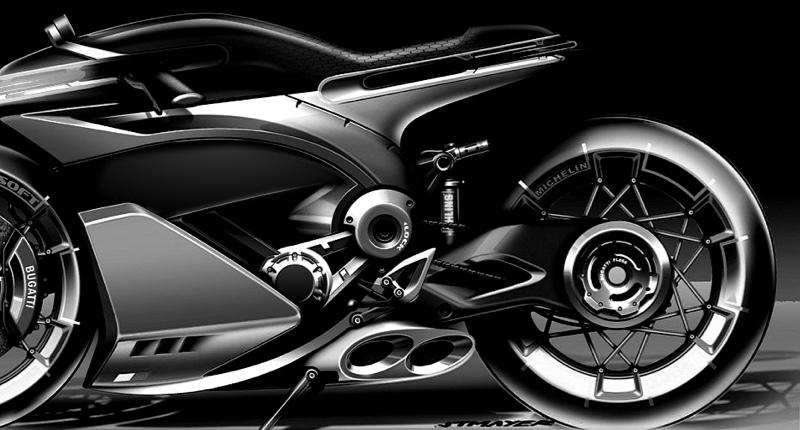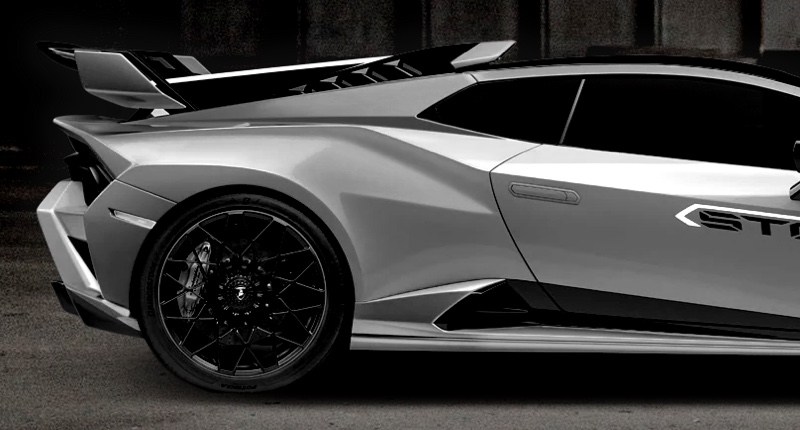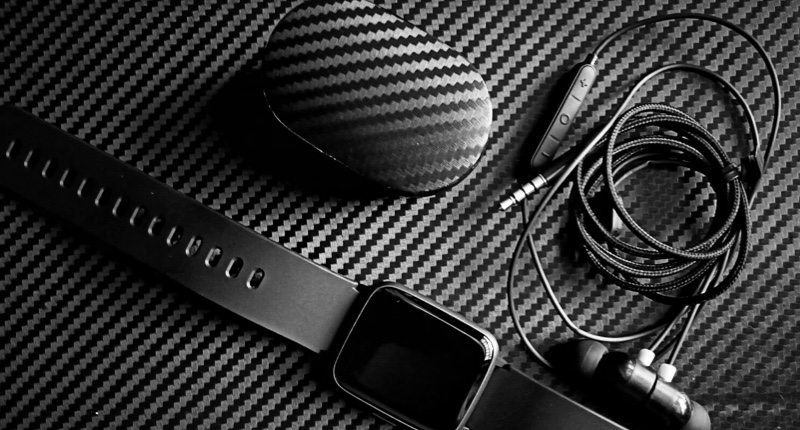Dry Carbon vs Wet Carbon in Aerospace Applications
- Dry Carbon vs Wet Carbon in Aerospace Applications
- Quick overview: why 'dry carbon vs wet carbon' matters for aerospace
- What is dry carbon? Understanding prepreg and out-of-autoclave approaches
- What is wet carbon? The wet layup and infusion family
- Manufacturing processes: dry carbon vs wet carbon
- Material properties comparison: dry carbon vs wet carbon
- Why the difference matters for aerospace certification and safety
- Design guidance: when to choose dry carbon vs wet carbon
- Manufacturing economics and scalability: trade-offs
- Inspection, quality assurance, and repair considerations
- Sustainability, materials evolution, and future trends
- Case examples: typical aerospace applications by process
- How Supreem Carbon supports customers facing the 'dry carbon vs wet carbon' decision
- Why partner with Supreem Carbon for aerospace-related composite work
- Practical selection checklist: choosing dry carbon or wet carbon for your project
- Frequently Asked Questions (FAQ)
- Q1: What are the core differences between dry carbon vs wet carbon?
- Q2: Can wet carbon be used for load-bearing aerospace parts?
- Q3: How big is the cost difference between dry carbon vs wet carbon?
- Q4: What inspection methods help ensure quality for either process?
- Q5: Can Supreem Carbon make aerospace-grade parts?
- Contact Supreem Carbon / Check Our Products
- References and sources
Dry Carbon vs Wet Carbon in Aerospace Applications
Quick overview: why 'dry carbon vs wet carbon' matters for aerospace
The choice between dry carbon vs wet carbon has direct impact on performance, weight, cost, manufacturability, and certification timelines for aerospace components. Engineers and procurement teams must evaluate mechanical properties, process control, inspection needs, and regulatory requirements when deciding which composite approach to use for primary structures, secondary structures, interiors, tooling, or aftermarket components. This article explains the technical differences, compares properties, discusses aerospace-relevant trade-offs, and provides practical guidance for selecting the right process.
What is dry carbon? Understanding prepreg and out-of-autoclave approaches
Dry carbon in aerospace typically refers to fiber architectures that are impregnated with controlled amounts of resin before cure — most commonly known as prepreg. Prepreg systems use a precisely measured resin content delivered to the fiber by the manufacturer, then the layup is consolidated and cured in an autoclave or via out-of-autoclave (OOA) processes using vacuum and heat. The 'dry' term contrasts with hand-wetted fibers at the time of layup: prepreg has a stable, handleable form with predictable resin distribution, which improves repeatability and lowers void content when processed correctly.
What is wet carbon? The wet layup and infusion family
Wet carbon refers to fabrics that are impregnated with resin during the layup step in the factory, rather than beforehand. Common wet processes include hand layup, vacuum-assisted resin transfer molding (VARTM), and infusion methods. Wet layup is more flexible and lower-cost for low-volume production or large, simple geometries; however it generally produces higher resin contents and higher void levels compared with autoclave-cured prepreg (dry carbon), which can affect mechanical performance and repeatability.
Manufacturing processes: dry carbon vs wet carbon
Comparing manufacturing steps clarifies why properties differ:
- Dry carbon (prepreg/autoclave): receive prepreg rolls → cut and layup → bagging + vacuum → autoclave cure (high pressure + temperature) or OOA cure (vacuum-bag + controlled heat) → demolding and finishing.
- Wet carbon (wet layup/infusion): dry fabric layup → tooling and peel layers → vacuum bagging or closed mold → resin infusion or hand-resin application → ambient or oven cure → demolding and finishing.
Autoclave consolidation in dry carbon removes entrapped air and enables higher fiber volume fractions. Infusion processes can approach lower void content if carefully controlled, but typically need more process engineering to match prepreg consistency.
Material properties comparison: dry carbon vs wet carbon
Below is a condensed, practical comparison of typical properties and manufacturing attributes seen in aerospace practice. Values are representative ranges; specific materials and process controls will change results.
| Attribute | Dry Carbon (Prepreg/Autoclave) | Wet Carbon (Wet Layup/Infusion) |
|---|---|---|
| Typical fiber volume fraction (Vf) | 55–65% | 40–52% |
| Typical void content | <1–2% | 2–6% (infusion can be lower) |
| Tensile strength and stiffness | Higher, more repeatable | Lower nominally, more scatter |
| Surface finish | Excellent as-cured | Good to fair; may need more finishing |
| Processing cost | Higher (materials + autoclave) | Lower (materials cheaper; less capital) |
| Cycle time per part | Long (cure cycle + autoclave backlog) | Shorter for simple parts (excluding post-cure) |
| Suitability for primary structural parts | Preferred | Possible with careful design/testing, typically used for secondary structures |
| Typical aerospace usage | Fuselage stiffeners, wing skins, control surfaces | Fairings, interiors, tooling, non-critical panels |
Sources for typical ranges include technical resources from leading composite suppliers and aerospace research organizations (see references at article end).
Why the difference matters for aerospace certification and safety
Aerospace certification emphasizes predictability and demonstrated performance over many production lots. Dry carbon prepreg processes produce parts with tighter control of resin content and lower voids, which reduces scatter in mechanical properties — a major advantage when establishing allowable design values and passing structural testing. Civil aviation authorities (and many military programs) often demand traceability of materials, process controls, and established NDT (non-destructive testing) criteria. Wet processes can meet these requirements but usually require more process qualification effort, additional inspection, and design margins.
Design guidance: when to choose dry carbon vs wet carbon
Practical recommendations used by aerospace engineers:
- Primary, load-bearing structures: favor dry carbon prepreg and autoclave or validated OOA methods to ensure low voids and consistent mechanical properties.
- Large, low-volume structures: wet infusion can be more economical if design accounts for slightly lower stiffness/strength and allows additional inspection.
- Interior panels and non-critical fairings: wet layup often provides the best cost-performance balance.
- Prototyping and tooling: wet processes speed up iteration; dry carbon prepreg helps when prototype must reflect final production behavior precisely.
Manufacturing economics and scalability: trade-offs
From an operations standpoint, dry carbon involves higher material costs (prepreg is pricier) and capital expenditure (autoclaves, specialized ovens), but yields lower scrap and higher first-pass part quality in volume scenarios common in aerospace. Wet carbon reduces upfront capital and raw material costs, which is attractive for small runs, repairs, and very large components where autoclave size is limiting. For scale, automated prepreg layup and tape placement technologies narrow cost gaps for larger production volumes.
Inspection, quality assurance, and repair considerations
Both methods require rigorous QA. Typical practices include:
- Incoming material certification and traceability (lot numbers for fabrics, prepreg batch records).
- Manufacturing process control: temperature logs, vacuum integrity, cure profiles.
- Nondestructive inspection: ultrasonic C-scan, X-ray, thermography, and tap testing as applicable.
- Mechanical testing for qualification: coupon tests, fatigue tests, and full-scale structural testing when needed.
Repairability differs: wet layup repairs are often simpler in the field because materials and resin can be applied on-site. Prepreg repairs usually require controlled cure conditions and strict adherence to repair procedures, which can be more demanding.
Sustainability, materials evolution, and future trends
Thermoplastic matrix systems and recyclable composites are emerging to address end-of-life concerns. Many thermoplastic prepregs and automated processes blur the line between dry and wet techniques by offering controlled resin states that can be consolidated rapidly. For aerospace, any change must pass extensive qualification. Material suppliers (and OEMs) are actively researching out-of-autoclave prepregs and resin systems that combine the performance of classic dry carbon with the processing flexibility of wet methods.
Case examples: typical aerospace applications by process
Examples of how manufacturers match process to part:
- Wing skins or primary load-bearing panels: dry carbon prepreg/autoclave for stiffness and low voids.
- Center fuselage frames or stiffeners: dry carbon where access to autoclaves exists; otherwise hybrid approaches combining prepreg and bonded wet elements.
- Large radomes or fairings: wet infusion for lower cost and simpler tooling.
- Interior panels, luggage bins: wet layup or molded sandwich constructions to optimize cost.
How Supreem Carbon supports customers facing the 'dry carbon vs wet carbon' decision
Supreem Carbon, established in 2017, is a customized manufacturer of carbon fiber parts for automobiles and motorcycles, integrating R&D, design, production, and sales to deliver high-quality products and services. We specialize in the technology research and development of carbon fiber composite products and the production of related items. Our main offerings include the customization and modification of carbon fiber accessories for vehicles, as well as the manufacturing of carbon fiber luggage and sports equipment. You can learn more at https://www.supreemcarbon.com/.
Why partner with Supreem Carbon for aerospace-related composite work
Although Supreem Carbon primarily serves automotive and motorcycle markets, the company's capabilities are directly applicable to many aerospace composite needs where lower-volume precision, customization, and engineering support are required. Key strengths include:
- Integrated R&D and design teams who can help translate aerospace requirements to manufacturable composite designs.
- Production scale: a factory of approximately 4,500 square meters with 45 skilled production and technical staff, enabling reliable small-to-medium batch runs and rapid iteration.
- Proven product breadth: over 1,000 product types with more than 500 customized carbon fiber parts, demonstrating broad experience in customized tooling, finishing, and quality control.
- Core offerings relevant to aerospace prototyping and secondary components: carbon fiber motorcycle parts, carbon fiber automobile parts, and customized carbon fiber parts, with tight dimensional control and high-quality surface finishes.
- Commitment to growth and quality: annual output value around USD 4 million and a vision to become a leading global carbon fiber products manufacturer.
Practical selection checklist: choosing dry carbon or wet carbon for your project
Use this checklist when specifying materials and processes:
- Define functional requirements: static loads, fatigue cycles, stiffness, environmental exposure.
- Set allowable property scatter and safety factors for certification.
- Estimate production volume and unit cost targets.
- Evaluate tooling and capital availability (autoclave access, large molds).
- Consider lead time and iteration speed for prototypes.
- Plan inspection regimen and supplier traceability requirements.
If your project needs rapid prototyping with moderate performance and low capital outlay, wet carbon may be appropriate. If the project demands tight property control, repeatability, and certification for primary structures, dry carbon prepreg processes are often the safer choice.
Frequently Asked Questions (FAQ)
Q1: What are the core differences between dry carbon vs wet carbon?
A: Dry carbon (prepreg) uses fiber pre-impregnated with a controlled resin content and typically requires autoclave or validated OOA cure. Wet carbon is impregnated during layup (hand layup or infusion). Dry carbon offers better property control and lower voids; wet carbon is more flexible and lower-cost for small runs or large parts.
Q2: Can wet carbon be used for load-bearing aerospace parts?
A: It depends on design, testing, and qualification. Wet carbon can be used for less critical structural parts or where design margins account for lower properties. For primary, certified load-bearing parts, prepreg (dry carbon) is commonly preferred to minimize uncertainty.
Q3: How big is the cost difference between dry carbon vs wet carbon?
A: Costs vary by material system, part complexity, and volume. Prepreg materials and autoclave processing are more expensive per part, but can reduce scrap and inspection costs. Wet layup has lower upfront capital and material costs, which is often advantageous for prototypes and small batches.
Q4: What inspection methods help ensure quality for either process?
A: Ultrasound C-scan, X-ray/CT scanning, thermography, and dye-penetrant/tap testing are commonly used. Incoming material certification, process monitoring (temperature/vacuum logs), and representative mechanical testing are essential.
Q5: Can Supreem Carbon make aerospace-grade parts?
A: Supreem Carbon has strong R&D and production capabilities and can support prototyping, secondary parts, and customized components. For fully certified primary aerospace components, Supreem Carbon can collaborate with OEMs and suppliers to meet specific qualification and traceability requirements; contact them to discuss your program's certification needs.
Contact Supreem Carbon / Check Our Products
To discuss projects, request samples, or explore custom carbon fiber solutions (including carbon fiber motorcycle parts, carbon fiber automobile parts, and customized carbon fiber parts), contact Supreem Carbon via their website: https://www.supreemcarbon.com/. Their integrated R&D and production capabilities can help evaluate whether dry carbon or wet carbon is the correct choice for your part and scale.
References and sources
Key references and industry sources used to compile this guide (authoritative publications and supplier technical notes):
- NASA technical reports on composite materials and manufacturing (various publications on composite processing and NDT).
- Hexcel technical white papers and datasheets for prepreg materials and processing guidance.
- Toray Industries technical resources on carbon fiber properties and prepreg systems.
- Composite World and industry journals covering VARTM, infusion, and out-of-autoclave trends.
- SAE International and SAMPE conference papers on certification and manufacturing of aerospace composites.
For detailed project evaluation and material selection help, contact Supreem Carbon directly and provide your part requirements, expected loads, environment, and production volume so they can recommend an engineered approach combining dry carbon or wet carbon processes and appropriate inspection methods.
Carbon Fiber in Cars: Benefits & Applications - Supreem Carbon
Custom carbon fiber fishing pole Manufacturers and Suppliers
What are the application scenarios of carbon fiber hood wrap?
Custom ducati v2 carbon fiber Manufacturers and suppliers in China
For Products
How can I get some sample?
Actually we dont provide the free sample to customer, you can place a sample order if need some parts.
For Facotry
Supreem carbon main competitive advantages.
Rich experience
Over 10 years production experience in carbon fiber industry, providing customers with high quality carbon products.
Excellent service
From new project development to customer finished product delivery, we provide customers with full tracking and timely feedback on project progress.
High-Quality Products
Our carbon fiber products undergo rigorous quality control to ensure customers achieve the high quality and cost-effective product.
For After-sales Service
What can I do if the carbon fiber products arrived is broken?
Please give us feedback as soon as possible and we will send new one to you.
Do you offer the fitting advice?
Of course! If you have any questions, please contact us on info@supreemcarbon.com.
For Customized Service
What is the customization process of carbon fiber products?
1. Customer provide 3D drawing, design requirement or idea
2. Technician evaluate project feasibility and provide a quotation
3. Project confirmation and arrange sample production
4. Delivery and customer feedback
5. Big scale orders production

Yamaha R1 Carbon Fiber Side Fairings
Introducing the Supreem Carbon Fiber Long Side Panels for Yamaha R1. Crafted with precision and expertise, this front side fairing is designed to elevate the performance and aesthetics of your R1. Made from high-quality carbon fiber, this fairing is not only lightweight but also incredibly durable, providing optimal protection for your motorcycle.

Yamaha R1 Carbon Fiber Airbox Tank Cover
The Supreem Carbon Yamaha R1 Carbon Fiber Airbox Tank Cover provides lightweight, durable protection with a sleek finish. Designed for R1 models, it enhances the style and performance of your bike. Its lightweight structure improves performance while maintaining the premium aesthetics necessary for high-end modification projects. As a dedicated manufacturer of carbon fiber parts, we provide stable production capacity, customization options, and strict quality control to support enterprise-level procurement and OEM/ODM needs.

Carbon Fiber Rear Seat Panel for BMW S1000R & M1000RR – Lightweight Performance
This carbon fiber rear seat panel is engineered for the BMW S1000R and M1000RR, offering superior rigidity, reduced weight, and a premium racing finish. Produced with autoclave technology and strict QC standards, the part ensures consistent OEM-level fitment. Supreem Carbon provides wholesale supply, stable bulk production, and customized solutions for global clients.

High-Performance Carbon Fiber Rear Undertail for BMW S1000R
Engineered for distributors, tuning brands, and motorcycle accessory businesses, the BMW S1000R Carbon Fiber Rear Undertail is a high-quality, durable, lightweight carbon fiber upgrade for the S1000R platform. This component is manufactured using aerospace-grade carbon fiber and precision molds to deliver superior stiffness, a seamless OEM-level fit, and a premium visual finish suitable for high-end aftermarket applications.
© 2024 Supreem Carbon All Rights Reserved.





Facebook
Pinterest
LinkedIn
Instagram